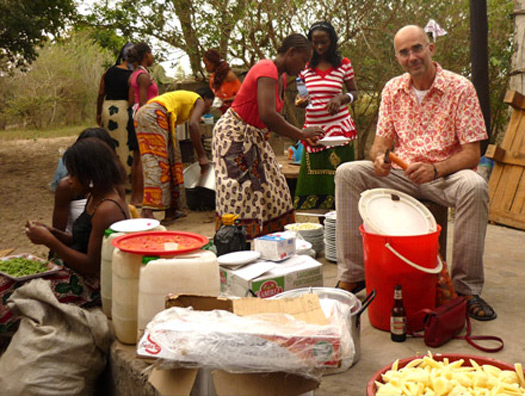
Dori Gíslason in Maputo, Mozambique
Kate Andrews
Can you tell us a little about yourself?
Halldór Gíslason
Halldór Gíslason
I am an architect originally, but have worked for design in various forms over the years. I was a senior lecturer in architecture in the U.K. during the '90s, moved to Iceland to become the first dean and establish the first Faculty of Design and Architecture at the Iceland Academy of the Arts 10 years ago and then moved to take over as the dean of the Faculty of Design in Oslo National Academy of the Arts in Norway, where I worked until a year ago. I also worked in the Norsk Form design center — a foundation for design and architecture in Norway — focusing on projects directed at making the everyday simpler, easier and more beautiful. There is an active institution working there named Design Without Borders that I’ve worked with; they run a number of international development projects.
Andrews
Andrews
Where and how did your career start?
Gíslason
Gíslason
In the beginning I worked as an architect and design consultant in Iceland after being educated in the U.K. and Italy. I ran an architectural practice and still do — designing various buildings, private houses, companies, etc. It was and still is enjoyable, but Iceland is not very big, so I had to move abroad again to enjoy bigger and broader stimulus and dialogue about design and its function in society.
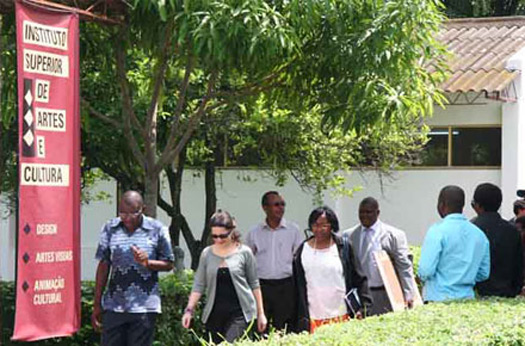
Campus of ISAC, Mozambique's first high-level school devoted to art and design
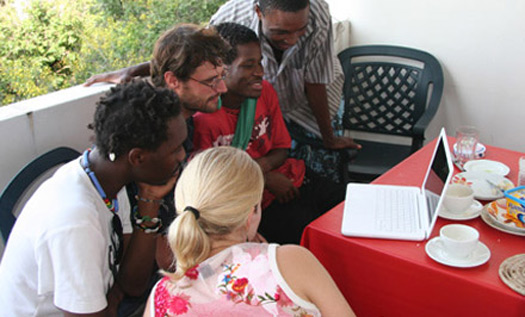
Workshop with Belgian filmmaker Dagmar Duportail
Andrews
Why did you choose a teaching career?
Gíslason
Gíslason
Because of the stimulation of the dialogue that you have in education, there is more time for research and experimentation than when one is busy with everyday practice. Students do fantastic work in their projects and stimulate new ideas and possibilities for design and architecture. Education continually opens up new avenues that practice does not have time nor money to address. And it also evaluates and criticizes practice, which is great.
Andrews
Andrews
Whilst there is a great deal of emphasis on evaluation and critical thinking within education, do you think there is a need for established design criticism at industry level?
Gíslason
Gíslason
Wow! Yes. It is our responsibility to be critical to industry and business. It is our role, both as singular designers and the whole of education. But we also need this the other way around. I just returned from a meeting in Geneva where we were planning a workshop for Senegal, Zambia and Mozambique. This is going to be about the creative industries and economy and is part of the UN program for that field. We discussed both education and development extensively, but I also insisted on the inclusion of delegates that are in practice now, often with no education but long-term experience. We often forget to listen to them.
In the other direction, I am the leader of the Cirrus Network — a network of design schools in Northern Europe. There we have discussed lots about our cooperation and collaboration with industry and business. We’ve held conferences about the matter and it has been great to see how the Scandinavian countries are developing this cooperation under the political strategies of "innovation" — something that governments have loved during the last five years. I have participated in various projects researching innovation, which have often looked at the more business-orientated "make profit" aspect from industry and the "social response" aspect from design. These two aspects have to work together if the world is to be better.

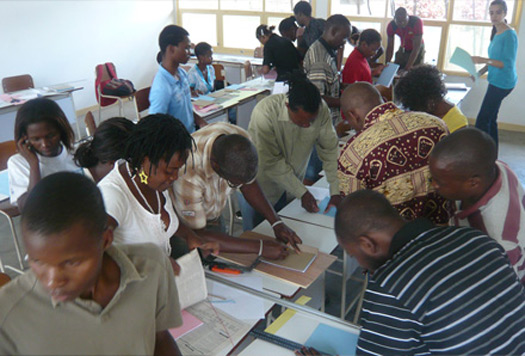
In the other direction, I am the leader of the Cirrus Network — a network of design schools in Northern Europe. There we have discussed lots about our cooperation and collaboration with industry and business. We’ve held conferences about the matter and it has been great to see how the Scandinavian countries are developing this cooperation under the political strategies of "innovation" — something that governments have loved during the last five years. I have participated in various projects researching innovation, which have often looked at the more business-orientated "make profit" aspect from industry and the "social response" aspect from design. These two aspects have to work together if the world is to be better.


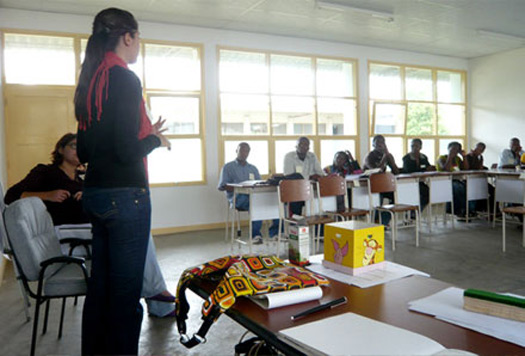
Scenes from Gíslason's documentation of his first day of school at ISAC
Andrews
You’ve been in Africa for the past year; can you tell us why you went there and what you’ve been doing?
Gíslason
Gíslason
In my last position as dean, I became increasingly interested in how design should be integrated into all activities: in business, industry and services, for example. In Oslo, we did various research and student projects in that direction in my faculty.
But I had decided before I took the dean’s position that I would not do more of those basic administrative jobs and I should go somewhere where my network and experience could be of use. I did evaluate various places and came to the conclusion that there is less need for designers in Asia since industry and design is really growing there greatly during the last two decades.
In Africa, however, design is much less active and has to be developed as an integral part of their cultural and industrial development.
I also came to the conclusion that there are enough designers in Scandinavia and quite frankly I would not be missed!
Andrews
Andrews
What have been the most surprising and challenging aspects of teaching design in Maputo?
Gíslason
Gíslason
Apart from learning Portuguese, I have had to use a completely different mindset about dialogue and evaluation in Maputo. The wins are many but very small. My own challenge has really been to look out for the fundamentals in design that we often do not discuss in European schools. We just start. I have loved discussing the curriculum, the procedures and the pedagogical advice that I can offer to the very promising staff in the new school.
Andrews
Andrews
Can you tell us a little about one of the designers in Africa that’s stood out for you?
Gíslason
Gíslason
There are actually so many. I, for example, live in a 1954 modernist block by Pancho Guedes, but he is really Portuguese. The Zimbabwean architect Mick Pearce is also a great architect and environmentally driven. For example, his Eastgate Center in Harare is based on termite mounds. There are many great people working in textiles and fashion too, like the Senegalese Oumou Sy. She is much more than a couturier — she is a poet, a playwright, an activist and a cyberpioneer who opened West Africa’s first internet café, in Dakar.
There are many people here that kind of do not fit the "designer" mold, which is great in my opinion. This situation is more similar to my home country of Iceland. With almost no industry, people have to create their own work somehow, and sometimes it is some kind of a fusion of music, art and design that is activist-based and focused on the betterment of society. Of course there are also many that are in it for the money (or to survive, actually).
Mozambique has a much weaker design culture than in art, music and dance. It is great to be in an academy developing design as part of that culture. It is possible to use the other art forms to support design-based activity. You can see an example of this with a project named "Without Balance" that is based on an exhibition held during the build-up to the COP15 summit in Copenhagen. The name is Sem Balança (Out of Balance); dance and visual communication about global warming and the environment.
Andrews
There are many people here that kind of do not fit the "designer" mold, which is great in my opinion. This situation is more similar to my home country of Iceland. With almost no industry, people have to create their own work somehow, and sometimes it is some kind of a fusion of music, art and design that is activist-based and focused on the betterment of society. Of course there are also many that are in it for the money (or to survive, actually).
Mozambique has a much weaker design culture than in art, music and dance. It is great to be in an academy developing design as part of that culture. It is possible to use the other art forms to support design-based activity. You can see an example of this with a project named "Without Balance" that is based on an exhibition held during the build-up to the COP15 summit in Copenhagen. The name is Sem Balança (Out of Balance); dance and visual communication about global warming and the environment.
Andrews
What are you currently working on?
Gíslason
Gíslason
I am working on many development projects, but the largest and most important has been supporting the establishment of the first higher education art and design academy in Mozambique, named Instituto Superior de Artes e Cultura.
I have spent good time supporting the locals in developing the program and various other practical issues. I have also been teaching design theory, the relevance of design and then mentoring the teachers.
The school was opened formally on September 3 by the Minister of Culture and Education.
I am also doing research on the integration of design in development projects and also gender balance in development and service design work.
Andrews
Andrews
Alice Rawsthorn confirmed last year that the "new breed" of social designers have proven design as "more than a creator of things." What are your thoughts on where we go now? How do we ensure a sustainable social role for design?
Gíslason
Gíslason
I have always been of the opinion that she promotes. But I was initially educated as an architect (and they are makers of societies, often) and then as a semiologican, and in philosophy that is really about how society functions and interacts. Therefore, this is never new to me. At the same time I understand the dialogue in design because some of design comes from exploration in material and form, while society takes second place. So we see here a convergence of architecture and design with the support of anthropology (we now have a number of anthropologists in design faculties; I set up one in my faculty in Oslo) ethnography, politics, etc. This is great because it opens up different motivations in the design field.
Andrews
Andrews
How would you assess the state of design right now? What and where are the opportunities?
Gíslason
Gíslason
My opinion is that designers and design knowledge (notably, I hate the term "design thinking" that comes from U.S. business schools) is fundamental for the functioning of the society of the future. There are so many things in the mundane everyday life that we really hate because they have been wrongly executed, the problem definition was wrong, etc. You find this in the health sector, transport sector and of course where I am currently very active, in the development sector, both in our western part of the world and in the developing world.
Andrews
Andrews
What advice would you offer to young design graduates looking to use their skills for social purposes? How can they get started and involved?
Gíslason
Gíslason
The leaders of my faculty in Oslo have decided that no student can graduate from the program without participating in development projects, working on service solutions or product development with local craftsmen or industries. In my mind, this is what all young designers have to look out for. For example: more than 50 percent of the users of design today are not users of "good design" but people living in the developing world. And yet I really, really advise people not to start up another action-based development/socially responsive project. Far too many exist already and they just compete for the same pot of support. But there are great opportunities all around. Go to the socially focused websites, or even my site or Kate’s site and find them in the links sections. And join them.
Andrews
Andrews
So what are your next steps and future plans?
Gíslason
Gíslason
After the establishment of ISAC here in Maputo we are developing a "change of knowledge" program in Oslo, at the moment projected for the next three years, where Norwegian designers, design students and teachers meet the designers in Maputo. Ideas are to run various common projects, developing transfer of knowledge in both directions. I have got most of the funding for this work from the Norwegian Foreign Ministry, but also some research funds for evaluation and report.
The world of design is so much more open today and the profession is quite international. Also, more than half of the users of design today do not live in Western-type economies, and we need our designers to gain better understanding of the conditions. And not just move in with Western preconceived ideas and sometimes strange design solutions (or problem definitions). We also want to address the"design for the other 90 percent" issue and integrate design in all development or industrial projects, at a much earlier stage than just coming in at the end to decorate or do the logo. Designers can and have to be involved in all manner of areas and sectors; health programs, agriculture, sanitation solutions and so on.
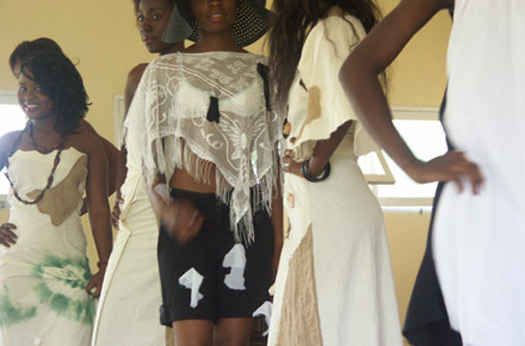
Presentation from ISAC's end of summer festival
The world of design is so much more open today and the profession is quite international. Also, more than half of the users of design today do not live in Western-type economies, and we need our designers to gain better understanding of the conditions. And not just move in with Western preconceived ideas and sometimes strange design solutions (or problem definitions). We also want to address the"design for the other 90 percent" issue and integrate design in all development or industrial projects, at a much earlier stage than just coming in at the end to decorate or do the logo. Designers can and have to be involved in all manner of areas and sectors; health programs, agriculture, sanitation solutions and so on.

Presentation from ISAC's end of summer festival
